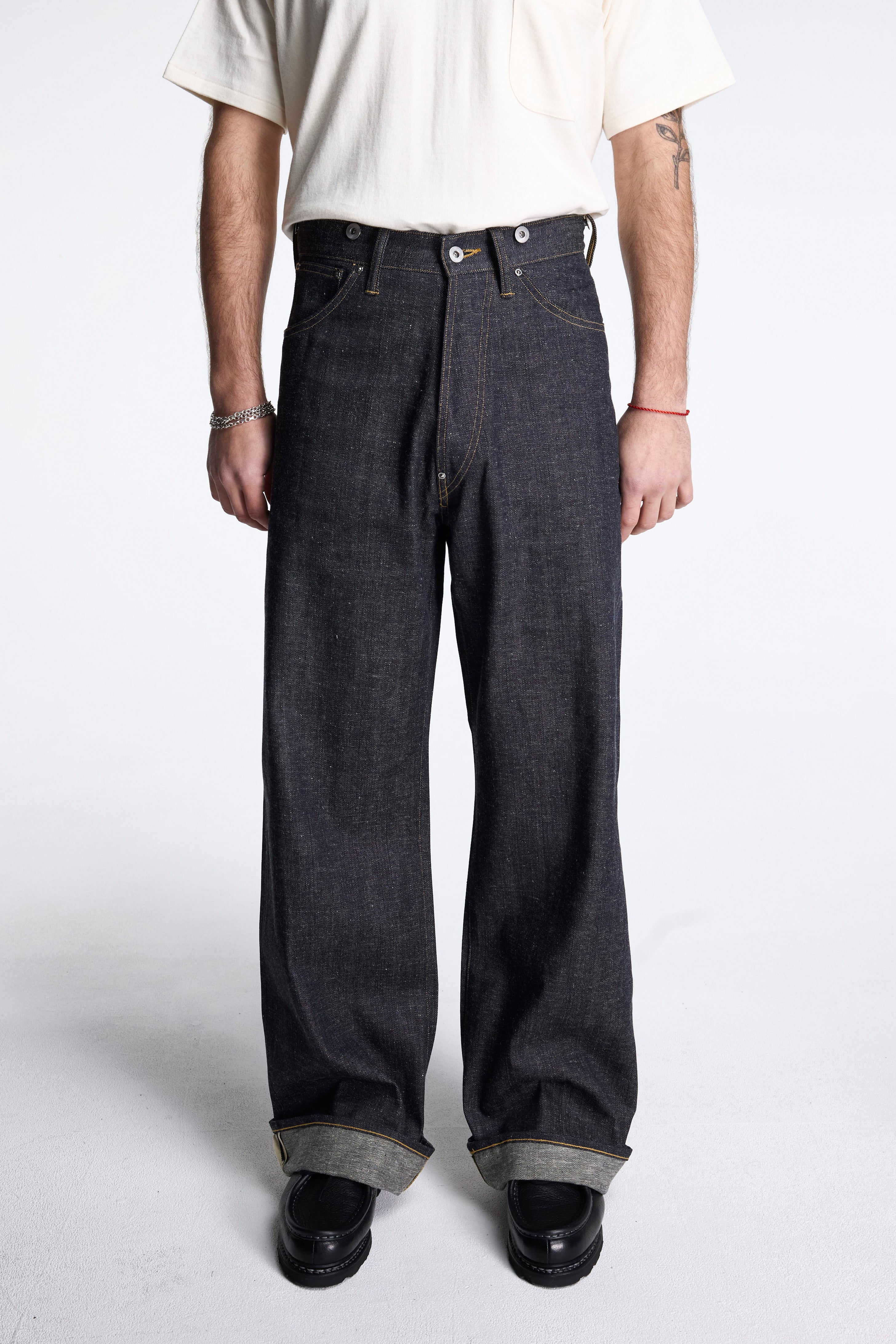
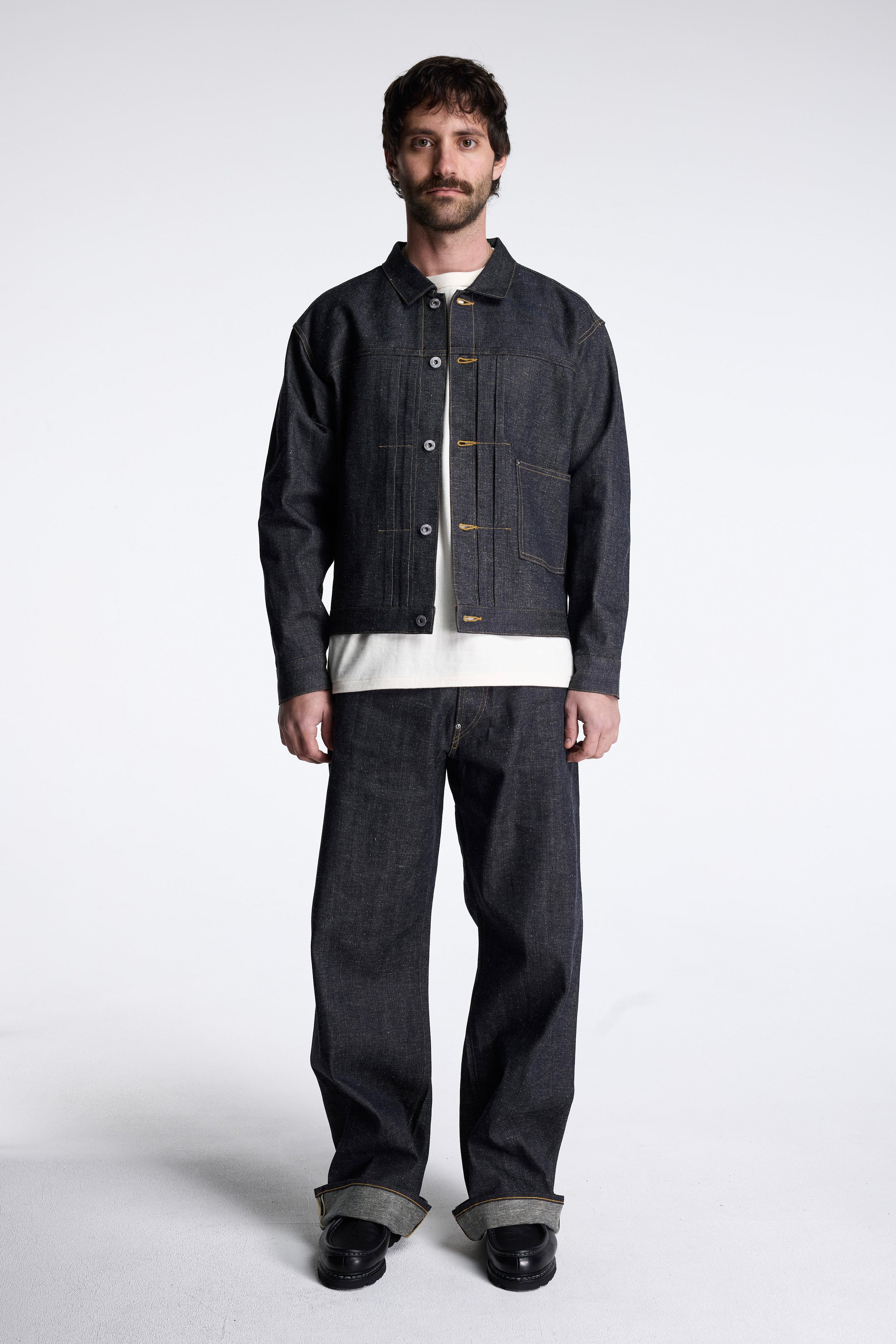
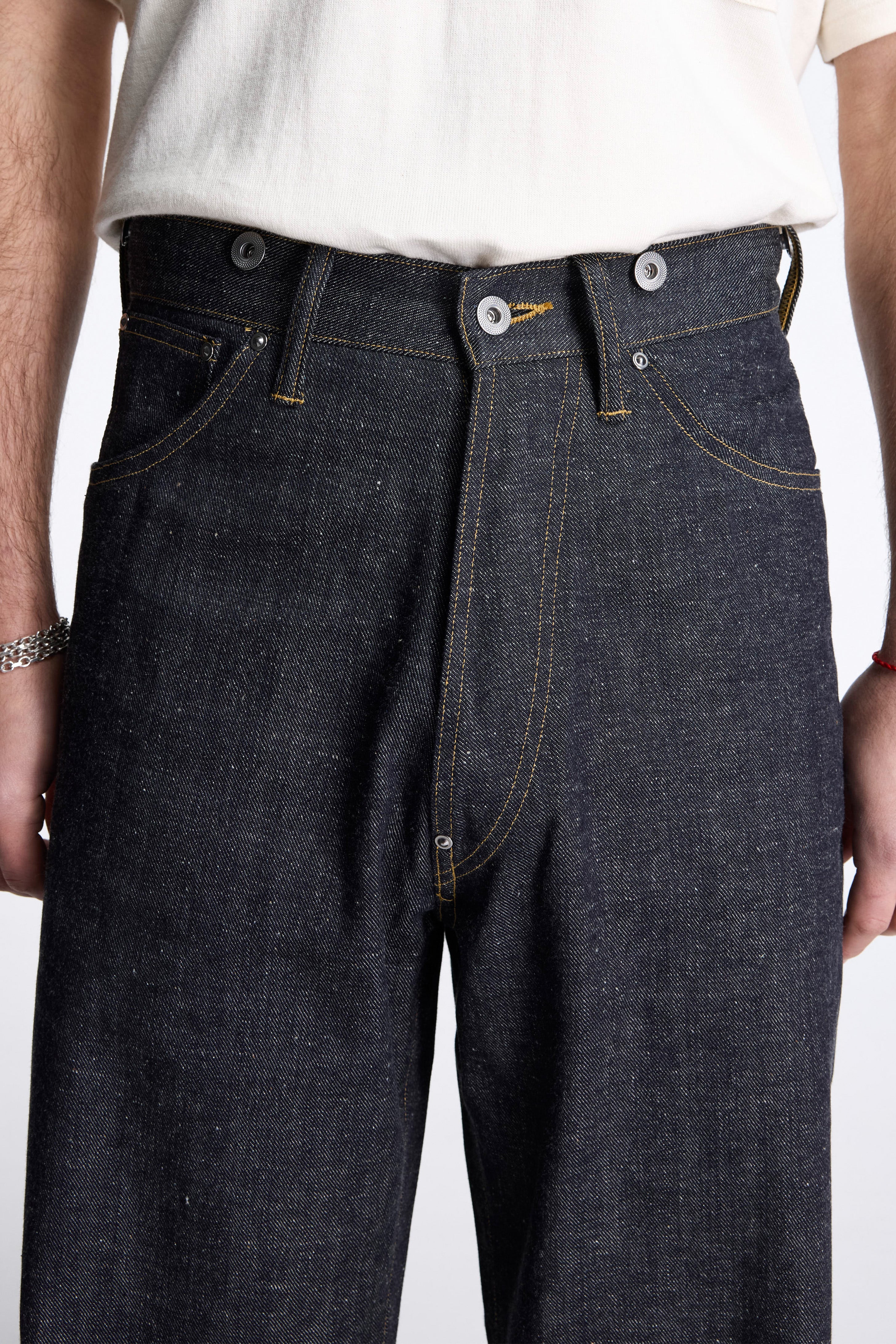
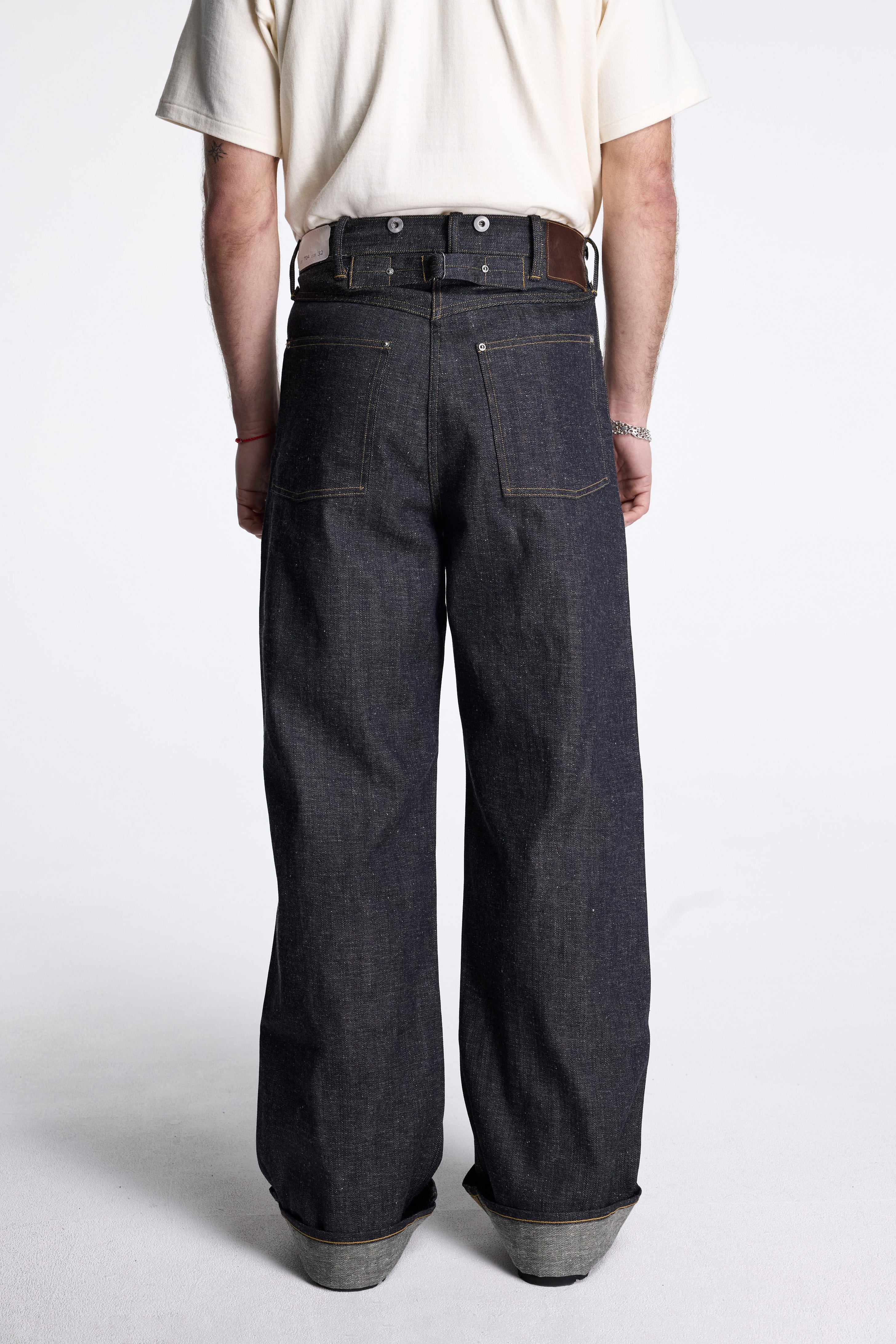
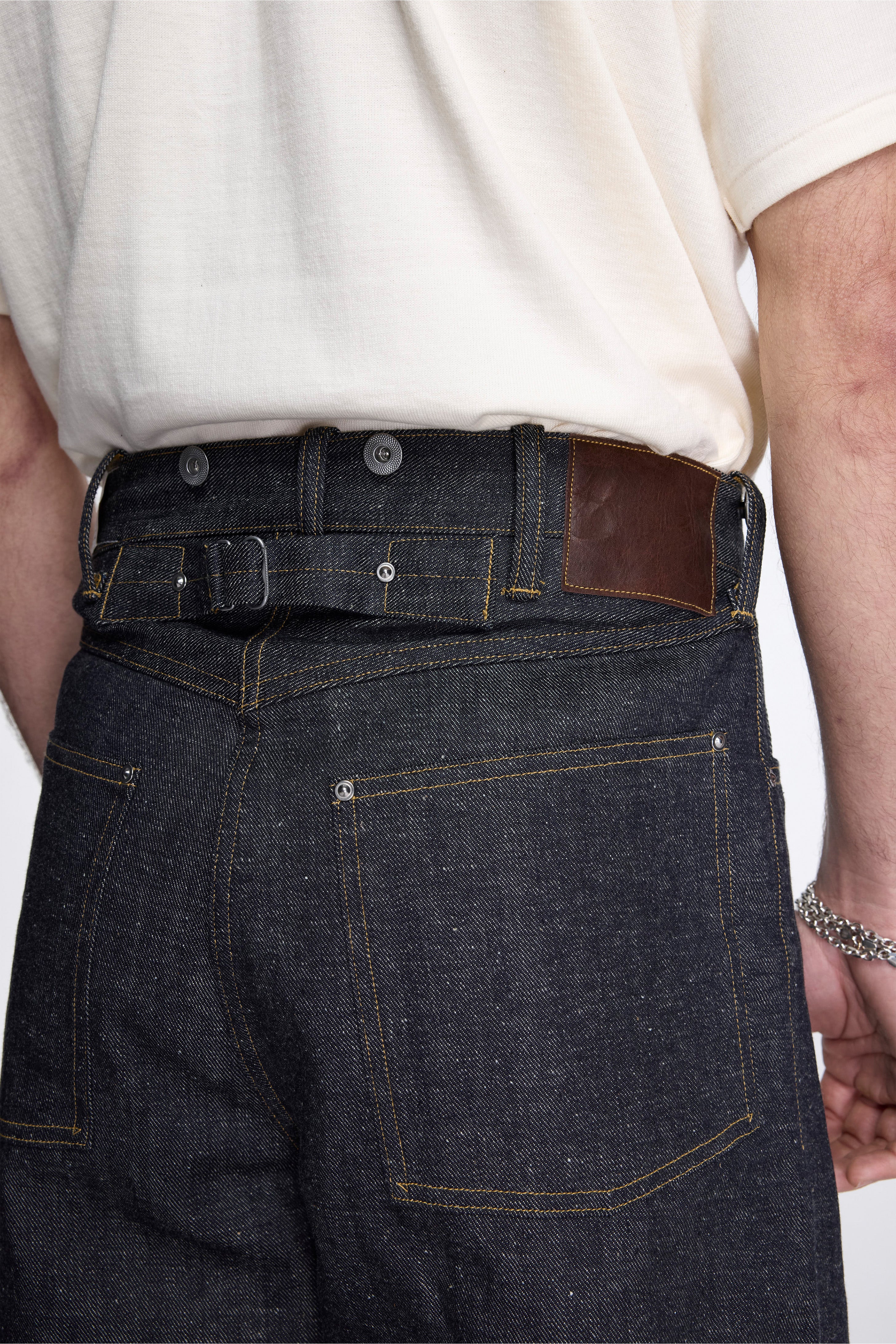
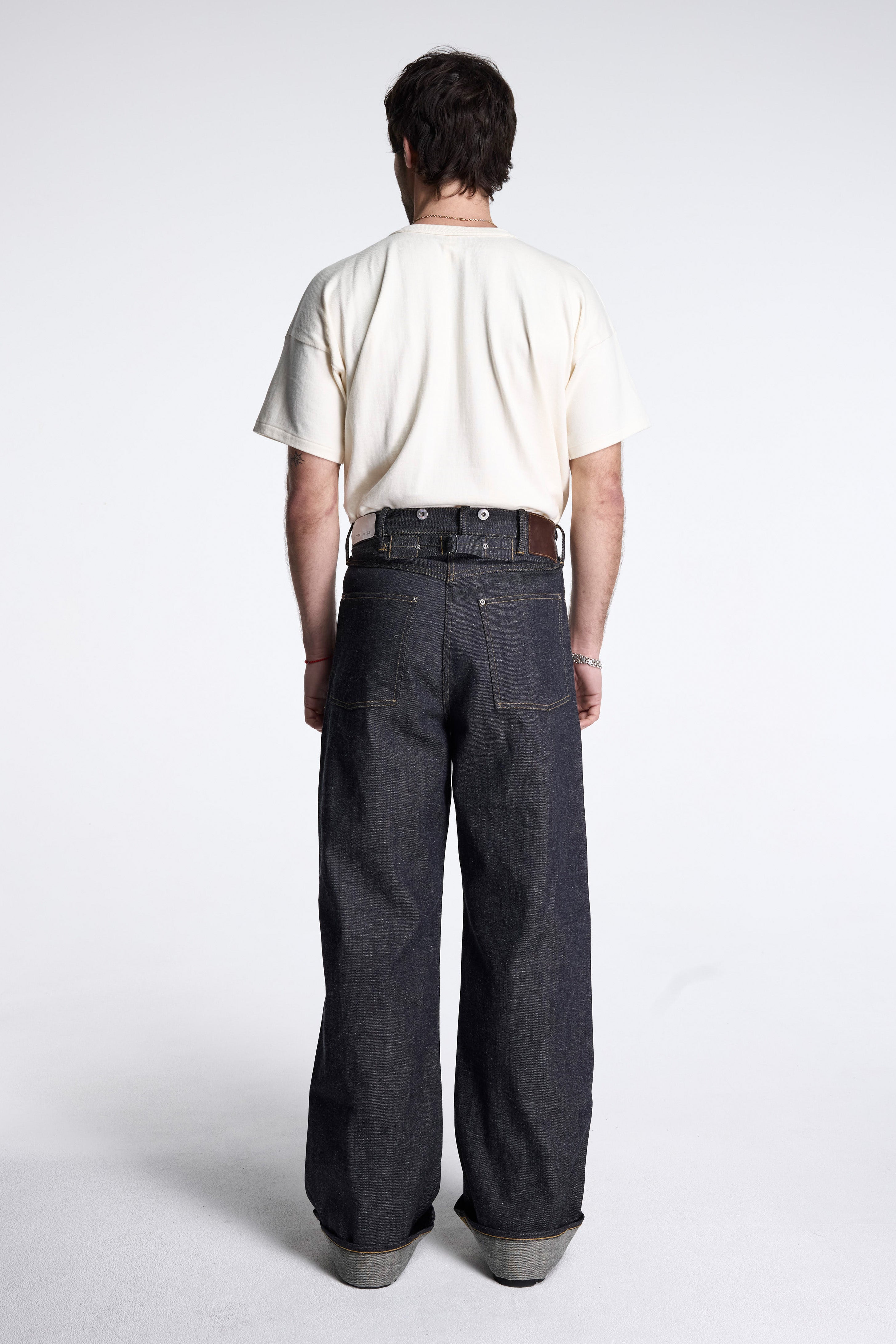
LOT.704 Denim Trousers C.1920'S Raw Indigo
Pickup currently unavailable at Gertrude St

LOT.704 Denim Trousers C.1920'S Raw Indigo
RAW INDIGO / 30
Gertrude St
200 Gertrude Street
Fitzroy VIC 3065
Australia
Gilbert St
2D Gilbert Street
Torquay VIC 3228
Australia
The LOT.704 Denim Trousers C.1920'S in Raw Indigo by T.T are cut from a custom-milled 3/1 left-hand twill denim, made in Okayama using shuttle looms that operate at a fraction of modern speed. The result is a fabric full of irregular texture, a slow-woven blend of organic cotton with rope-dyed warp and nep-dyed weft, producing a signature green-cast indigo blue with a vintage tone. The fit is high-rise and wide-legged, dropping clean from thigh to hem. Details like the curved front pockets and rear cinch-back buckle are lifted directly from early 20th-century workwear. Finished with raw iron hardware and a mud-dyed leather patch from Amami Ōshima.
- Based on 1920s store-brand American denim trousers
- 3/1 left-hand twill selvedge denim
- Sanforized to prevent shrinkage
- Iron buttons and rear hardware, uncoated to age over time
- Curved front pockets and rear buckle-back closure
- White selvedge detail
- Leather patch dyed with traditional mud dye (dorozome) from Amami Ōshima
- 100% Cotton
- Made in Japan
- Ethan is 182cm and is wearing size 32
Please contact us here should you have any inquiries about the product.
T.T, a unisex brand based in New York and Kyoto, was founded by Taiga Takahashi, whose education fused Japanese culture with Western ideas. After graduating from Central Saint Martins in 2017, he launched his brand, centred on the concept of "resurrecting relics of the past to unearth artifacts of the future." Takahashi, an avid collector of vintage garments from the pre-mass production era, emphasizes the historical value of craftsmanship. Through an archaeological lens, he reinterprets time-worn fabrics and sewing details, creating garments meant to endure for centuries, incorporating endangered traditional Japanese techniques and collaborating with skilled artisans.
SHIPPING
|
Country | Carrier |
Standard |
Express |
Return Only |
Exchange |
|
Australia | Australia Post |
$10 (>$200 Free*) |
$20 (>$350 Free*) |
$15 |
$30 |
|
New Zealand | DHL Express |
N/A |
AUD30 (>$350 Free*) |
AUD30 |
AUD60 |
|
Rest of World | DHL Express |
N/A |
AUD50 |
AUD50 |
AUD100 |
* Free shipping does not apply to sale items.
Processing time.
We aim for same day processing of all orders placed by 10am on business days.*
Orders placed after 10am weekdays, on weekends or public holidays will be processed the following business day.
* International orders with items from multiple locations will be consolidated before shipping adding 1-2 business days to processing time.
RETURNS
Online Returns
- Eligible items may be returned for exchange or store credit within 14 days of purchase.
- Returned products must be unused, unwashed, in “as new” condition with all original tags, labelling and packaging intact. Returns are accepted at the discretion of our staff.
- Socks, underwear and earrings may not be returned for hygiene reasons.
Sale Returns
- Final Sale items and sale items sold with additional promotional discount codes are not eligible for return or exchange unless faulty as determined by our warranties team.
- Sale items that are not on final sale can be returned for exchange or store credit within 14 days of purchase.
Return shipping
|
|
Australia |
New Zealand |
Rest of World |
|
Return Only |
$15 |
AUD30 |
AUD50 |
|
Exchange |
$30 |
AUD60 |
AUD100 |
- Charges will be deducted from eventual store credit or invoiced before shipment of exchanged goods.
Click here for our full returns policy.
Choose options







